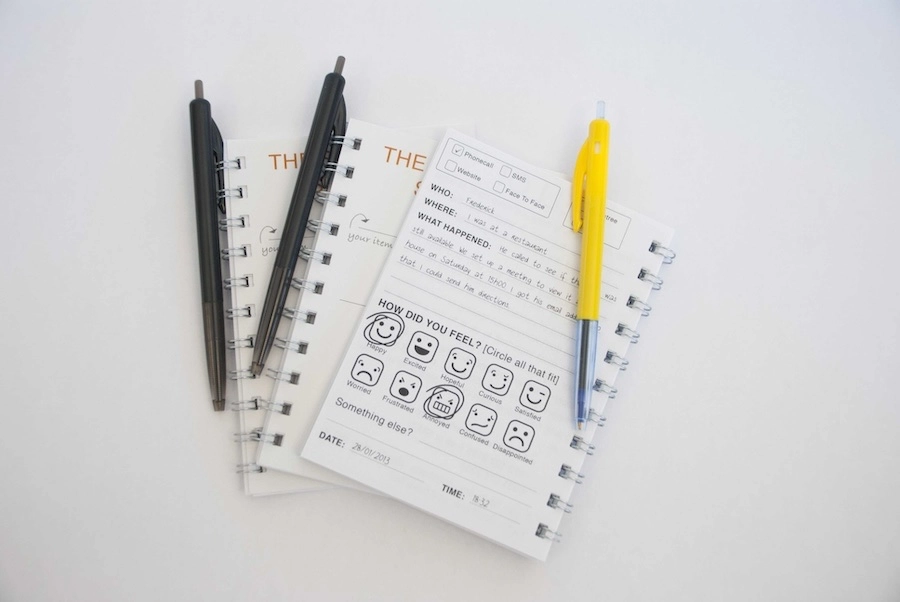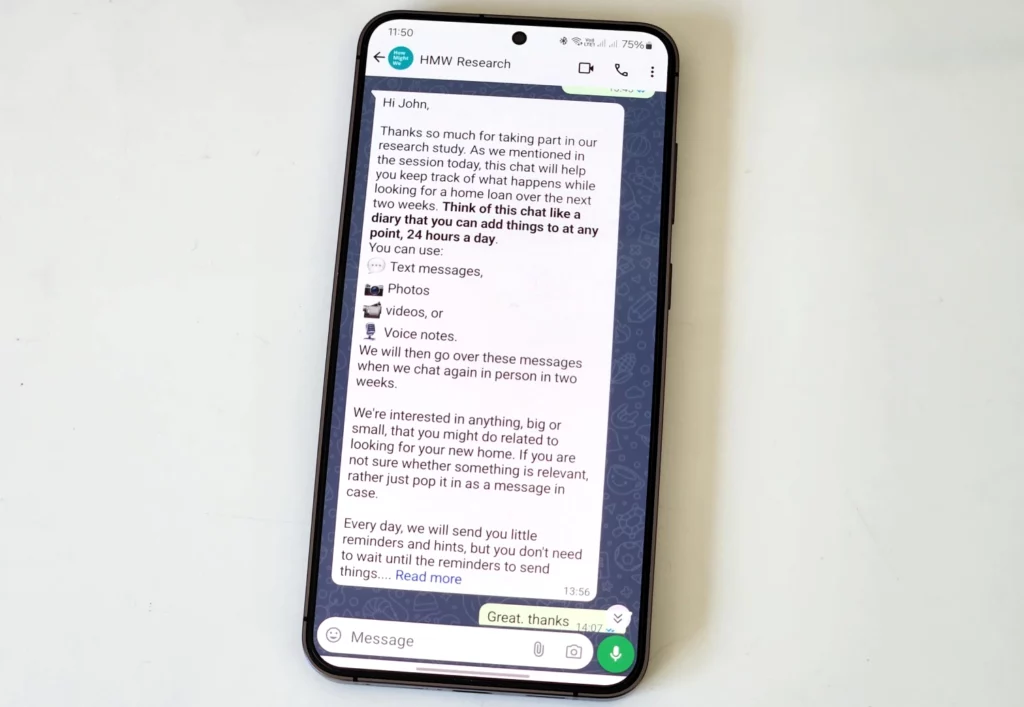Diary studies
Diary studies are great for shedding more light on contextual behaviour. During a diary study, respondents record their own experiences while completing day to day or specified tasks over a period of time.
We meet with respondents to brief them on when, where, and how to record their interactions.
After the diary period is complete, we conduct post-diary interviews to unpack what they have recorded and find out more about the experience. We then collate the qualitative findings and present these in a report.
Diary studies are best when
- We need to understand the impact of situational and contextual factors on the experience, but contextual visits are not possible
- The experience cannot be adequately simulated in an in-depth interview or usability test
- Tasks are too long to complete in a standard 60-minute research session
Examples of past diary studies
How people look for information
This one-week study investigated how people look for answers in the world around them, including small queries like how to spell words to plumber recommendations, directions to friends’ houses, and all the way to which university they should attend.
We asked participants to fill in three to five pages a day with all the information they looked for that day. We then spent ninety minutes with them in an in-depth interview, going over the diary and listening to stories about how they found or failed to find the answers to their questions.
How people find and choose a new home
We wanted to learn what goes into buying a home and choosing a home loan. This two-week study followed new families looking for their first home, investigating all the reasons people like and dislike the home-buying journey.
How people get fit
We asked people to report on their fitness routine, including whether and when they went to the gym, what they liked and disliked about it, how motivated they felt, and what made them continue or stop.
How people sell their car
We wanted to learn about buying second-hand cars from an online marketplace. We wanted to know what experiences people had over a two-week period, how safe they felt during interactions, how far they travelled, and how they knew if the car was worth it or not.
How young adults get help from a cognitive behavioural therapy (CBT) chat
The CBT chat was on WhatsApp, so we created a second WhatsApp chat to use as the diary. We posted questions in the second chat every day, asking participants to express how they felt about the content and exercises being asked of them in the CBT chat.
Got questions or want to book?
How it usually works
Statement of focus
We start with a kick-off session with you to determine what the objective of the research is. We call this the statement of focus. It’s usually in the form of a question, and it’s not something that we can ask customers directly.
For example: “What factors influence a new family when buying a home” or “How do people of different cultures look for information?”
Based on what needs to be covered in the statement of focus, we will formulate the best way to gather the findings. We will plan what type of diary we will use, what questions we will ask, and how frequently we will remind participants to fill it in.
Recruit respondents
Minimum of two weeks
Finding the right people to participate is vital, so we use a team of the best recruiters in South Africa and Europe. Based on your brief, we create a carefully designed screener to ensure that respondents meet your target market criteria. We also recruit extra in case there are any last-minute cancellations or people drop off during the study.
We manage all POPIA and GDPR requirements and capture consent.
Run the diary
Five days to two weeks
At the start, we will introduce the study to each participant in a group session or 15-minute individual sessions. We will explain how the diary works and what is required of them.
During the diary study, we send daily reminders to each participant, get light feedback on how it’s going and if it’s a digital diary track if the participants are adding entries.
In-depth interviews
Four or five sessions a day
At the end of the study, we run a ±60-minute one-on-one, in-depth interview with each participant. We use the diary as a memory jogger of the events that happened over the last few days. Using the diary, we can deep dive into each event, asking questions about why they felt the way they did or why they took the action recorded. We are more interested in the details that the participant tells us in this session than the entries in the diary itself
We stream these sessions live, but they are also recorded and available for watching later.
Present findings
Ninety minutes
We present the findings of the diary study in a comprehensive report laying out all the themes and insights discovered during the research. If appropriate, we pair the themes with clips of some sessions featuring the most impactful segments.
Digital or physical diary?
A diary can be a physical booklet that participants carry with them or an app on their phone.
Physical diaries
Physical diaries allow us to be a little more detailed in the requests for each entry. They are also easily branded and can be small enough to be carried around. Depending on the group, some participants find capturing in physical diaries easier.
Digital Diary
There are a number of apps we can use for a digital diary, but we find a dedicated WhatsApp chat to be the easiest. We can send different questions each day, and participants can answer with text, voice notes, and photos.
Downsides to diaries
With diary studies, we rely on the participants to record their own experiences. Since a researcher is not present, we will miss the subtle nuances we would pick up through observation during an in-person field study or contextual enquiry. Participants will also only capture what they think is interesting to us and not every event or the whole event in detail. We try to mitigate this by not relying on the data captured in the diary but rather on a retrospective account of the events during the in-depth interview afterwards where the researcher may investigate further a particular event.
Diary studies require participants to create entries regularly. We need to remind them often to ensure this happens, which in turn affects the participants’ experience. Because of this, we can’t use certain parts of the data, like the “number of interactions with the system,” as our reminders affect this.
Let’s chat
If you’re wondering whether a diary study is the right tool for you, please get in touch to discuss what you are looking to learn and we will help you decide on the best approach.

